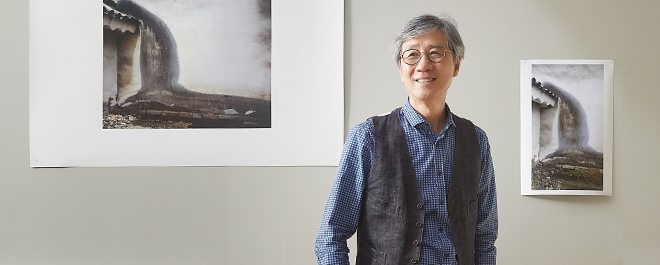
Contents


Free From Human Intrusion
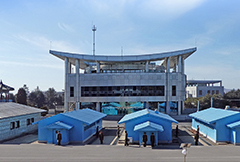

Dreaming of Delightful Zone

Take You to the DMZ

Seeing With the Mind, Talking Through the Lens

the Design of Handheld Fans


Shared Together for Double the Happiness


Founded in the Spirit of Candlelight

Seeing with the Mind,
Talking through the Lens
Photo Artist Koo Bohn-chang
“Taking the moments where quiet tremors or minute parts of daily life get the chance to shine, traces hidden beneath the surface of life, and numerous stories that are easily passed by, putting them down in photographs that end up moving someone. That is what my life is as a photographer.” - Koo Bohn-chang
Written by Park Ji-yeon
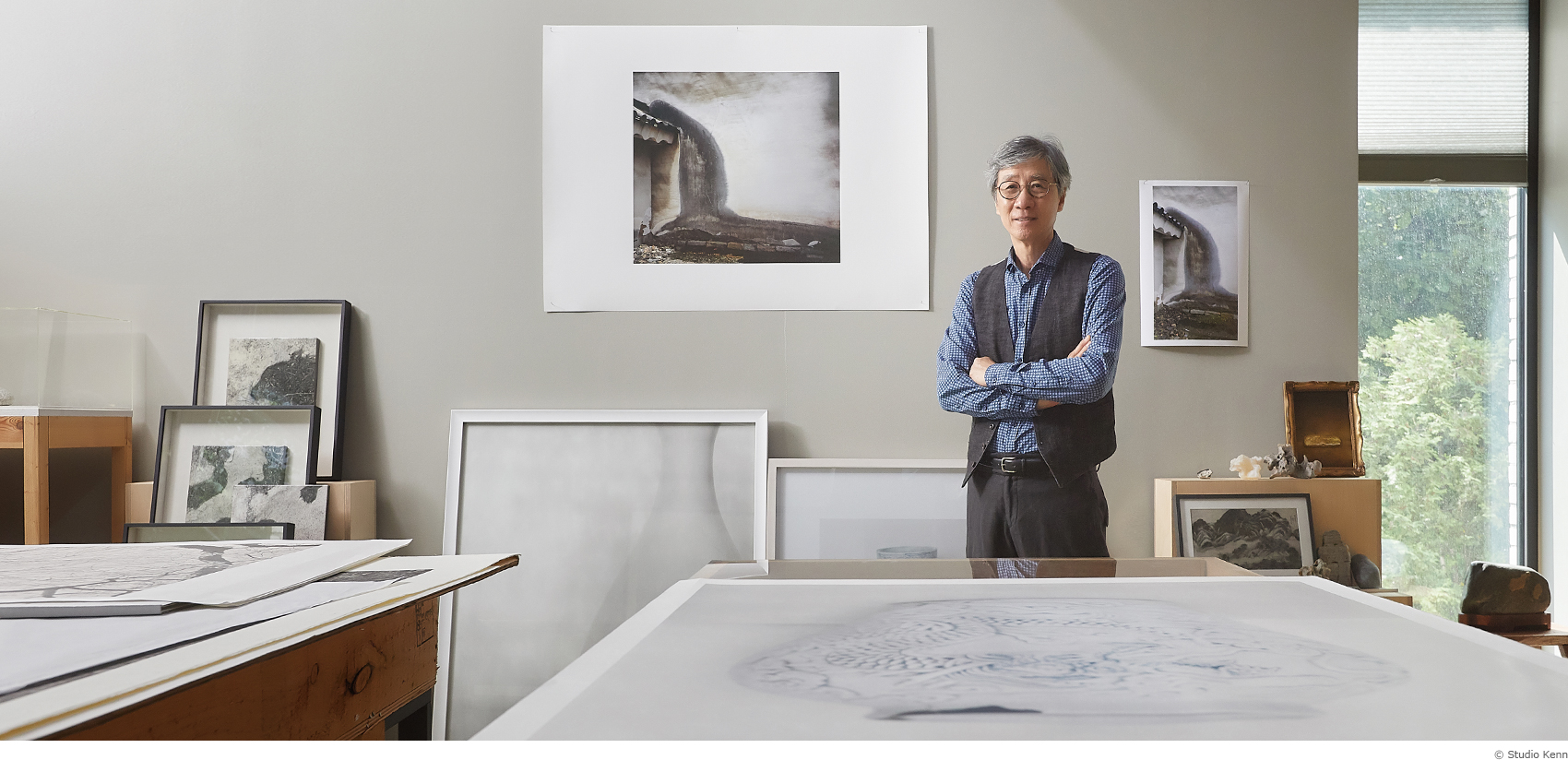
A Photographer Who Collects Time
Time poses a challenge to everyone who picks up a camera. Developing a unique approach to time is the process in which a photographer shows his or her originality. Renowned photo artist Koo Bohn-chang has been given the nickname “collector of time” due to his meticulous and captivating approach to time.
Koo does not obsess over technical devices in order to give permanence to his photographs, documents of the transient. To him, the most important thing is the time taken to reach the essence of the subject, the time taken to see its hidden beauty, and thus experience communion and resonance with the subject.
Koo once said, “If someone is moved when viewing a photo, it must be because the communion between the subject and the photographer has permeated into the film, like a kind of energy.” The time he has poured into thinking and working on a photo go into the film. Once that has been done, he ponders, “Where, and how should this photo be placed, so that viewers may empathize with the photographer’s intent?”
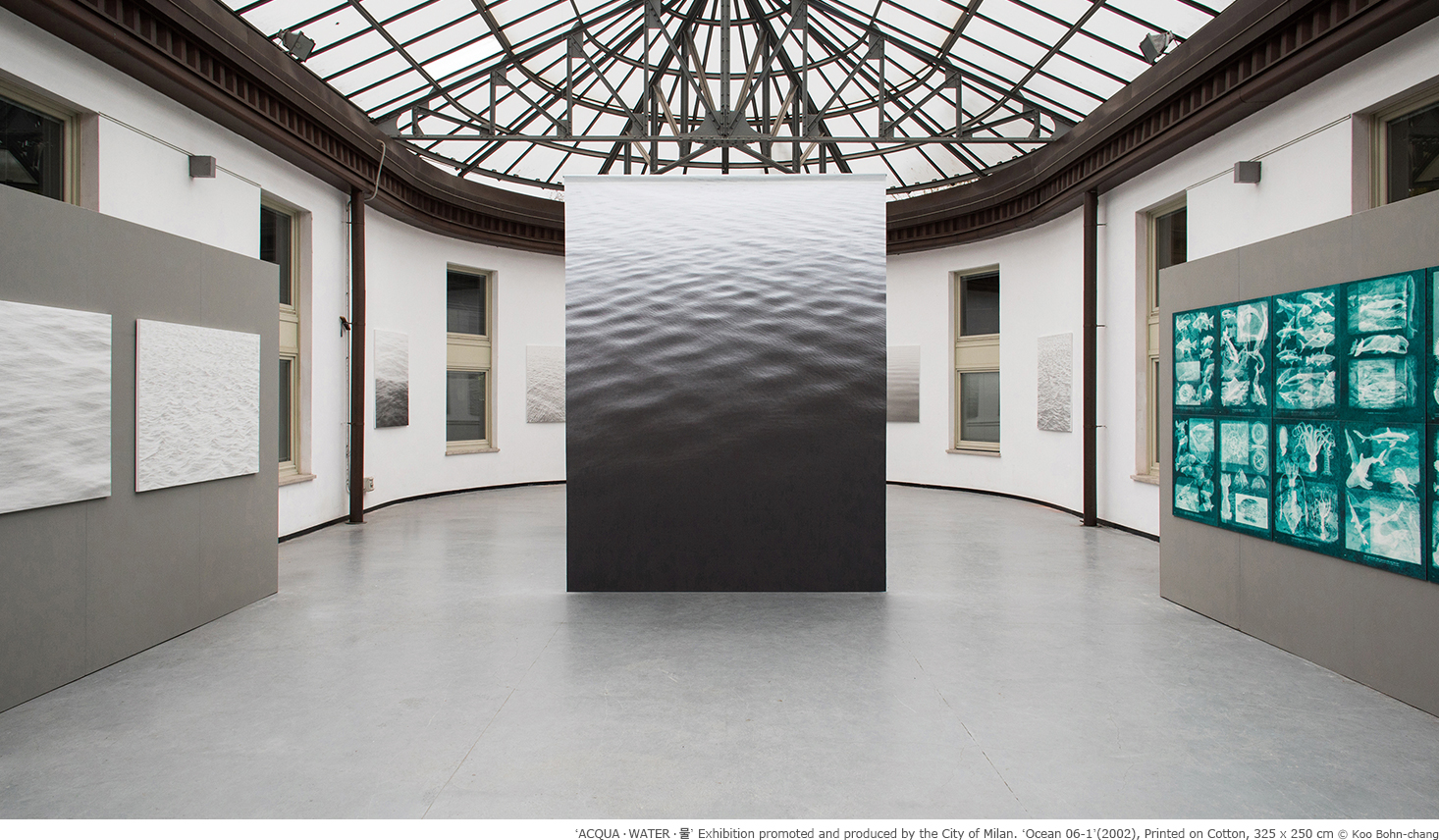
The Value of Small Things
Koo Bohn-chang sees the time and effort taken to get to the essence as the most important parts of photography, and focuses on how best to reveal this essence. He wants to take away superfluous details and embellishment and talk about the essence. He is wary of overinvesting energy in the details, at the risk of losing the essence. He takes interest in the simple and the small, rather than the large and splendid. “Beings that quietly hide one step back, without drawing attention to themselves, they may look worn out and no longer of use.
However, if you take an interest in them and look closer, the stories they have absorbed within start to seep out. I want to talk to and listen to small and quiet beings, to get closer to their traces of time, their essence of being, through small voices rather than loud, through changing things slowly rather than rapidly.” He is exceptionally skilled at viewing a subject in a way that only he can.
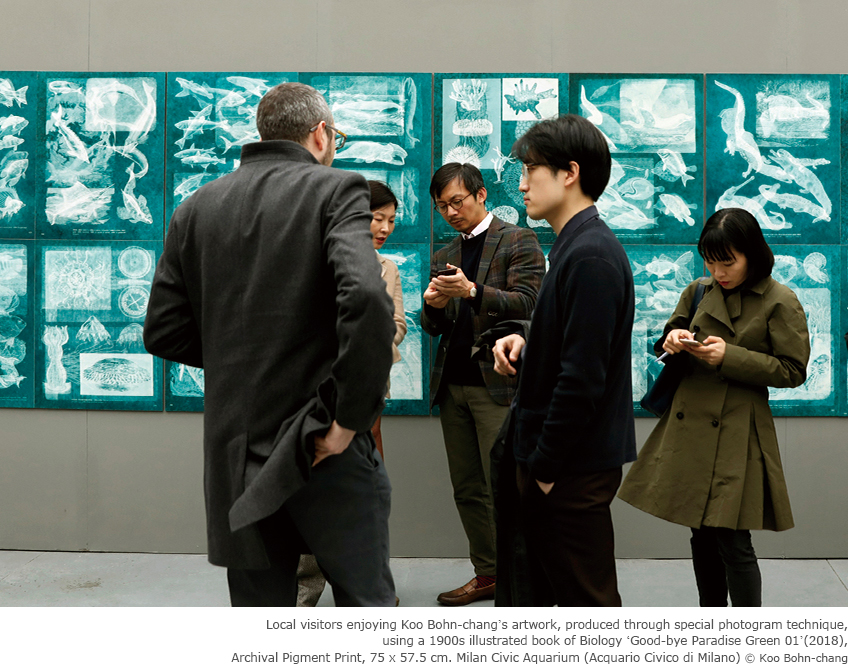
Koo never lets the small things pass him by. The smaller the object, the more valuable it becomes when seen through his eyes. A discarded doll, a worn and broken piece of soap, they all become infused with value in his work. He observes the small things in daily life with all his heart, thinking about their essence, and when he finally hears a story, he starts a conversation with his eyes. This is Koo Bohn-chang’s eloquence, accompanied by the sound of the camera shutter.
The Power of Perspective
In fact, the reason why Koo began photography was not some grandiose mission. As he puts it, “I wondered what I could do as a human in this world. I wandered. When I started taking photographs, I was finally able to see my raison d’être.” Just as inconspicuous objects gain meaning in Koo’s photos, Koo was also reborn as a “meaningful being” through the medium of photography. He had majored in business at a prestigious university and was hired by an equally prestigious company. However, his thirst for artistic expression kept growing. Finally, he gave it all up to study photography at the Fachhochschule in Hamburg. As he was approaching graduation, he paid a visit to Andre Gelpke, a photographer he had always admired. Gelpke said, “Although these are good photos, they don’t show your unique identity. I can’t tell if these were taken by a German or a Korean photographer.” From that point on, Koo began pondering his own identity as a photographer, and his intellectual and artistic efforts led to his unique perspective. The accumulation of time spent in building this perspective is the energy in his work today that draws the highest praise of all: “Only Koo Bohn-chang could have taken this photo.”
He explores the basic formal characteristics and essence of various subjects, such as ceramics, soap, masks, utensils, hands and feet, simplified to points, lines and sides. He uses minimalist compositions and controlled palettes to expand the scope of his photography to broader themes such as the finiteness of time and the human condition.

-
Koo Bohn-chang Profile
Professor, Kyungil University of Photography & Video
 2018“Acqua · Water · mul” in the Civic Aquarium of Milan. Invitation of the city of Milan.
2018“Acqua · Water · mul” in the Civic Aquarium of Milan. Invitation of the city of Milan. 2016‘花’, Shinsegae Gallery Incheon, Incheon
2016‘花’, Shinsegae Gallery Incheon, Incheon 2015‘Le Parfum dans tous les sens’, Jardins du Palais Royal, Paris ‘OBIECTA’, Giacomo Guidi, Roma
2015‘Le Parfum dans tous les sens’, Jardins du Palais Royal, Paris ‘OBIECTA’, Giacomo Guidi, Roma 2014‘Vessel + White‘, Danilo Montanari Editore, Italy ‘White On White’, Villa Flor, S-chanf, Swiss
2014‘Vessel + White‘, Danilo Montanari Editore, Italy ‘White On White’, Villa Flor, S-chanf, Swiss 2009‘Vessel · Soap · Interiors’, Galerie Camera Obscura, Paris ‘The Face beyond Faces’, Dong-gang International Photo Festival, Dong-gang Museum of Photography, Yeongwol
2009‘Vessel · Soap · Interiors’, Galerie Camera Obscura, Paris ‘The Face beyond Faces’, Dong-gang International Photo Festival, Dong-gang Museum of Photography, Yeongwol 2008Art Director, Daegu Photo Biennale
2008Art Director, Daegu Photo Biennale 2004‘Masks’, ‘White’, Galerie Camera Obscura, Paris
2004‘Masks’, ‘White’, Galerie Camera Obscura, Paris 2002‘In the Beginning’, Shadai Gallery, Tokyo
2002‘In the Beginning’, Shadai Gallery, Tokyo 1980 - 85Diploma Fotodesign, Fachhochschule, Hamburg
1980 - 85Diploma Fotodesign, Fachhochschule, Hamburg
Numerous Layers of Ongoing Work
Koo works on many different projects at the same time. Just like multiple windows opened on a computer screen, his projects progress simultaneously. There are still more ideas in his head waiting to be brought to life. However, he doesn’t take any of them lightly. Another of Koo’s unique talents is the ability to work faithfully on numerous layers simultaneously. It is no longer a surprise to him when these large and small ideas weave together at some point in time, resulting in a single story and unified piece.
Koo is an established artist who has been active on Korea’s modern photography scene for over 30 years, slowly accumulating rings like a pine tree. He still continues to expand his layers of work, and keeps himself as busy as ever. In April, he was invited by the city of Milan to hold a month-long exhibition titled “Acqua-Water-물” at the Civic Aquarium. It was a highly prestigious spot, at a key exhibition space created for the 1906 Milan Expo, during the high season for exhibitions in Milan. Furthermore, the chief director of all museums in Milan requested that he photograph the collection of the Milan Natural History Museum and hold an exhibition of the resulting work. Another layer added to his workspace. He is very excited about the opportunities presented by the new projects.
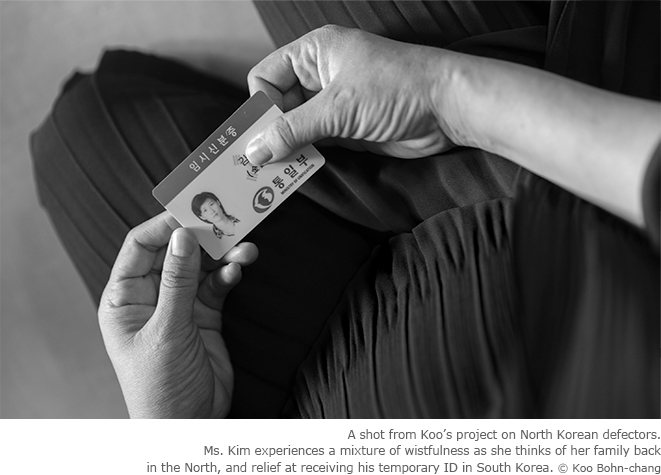
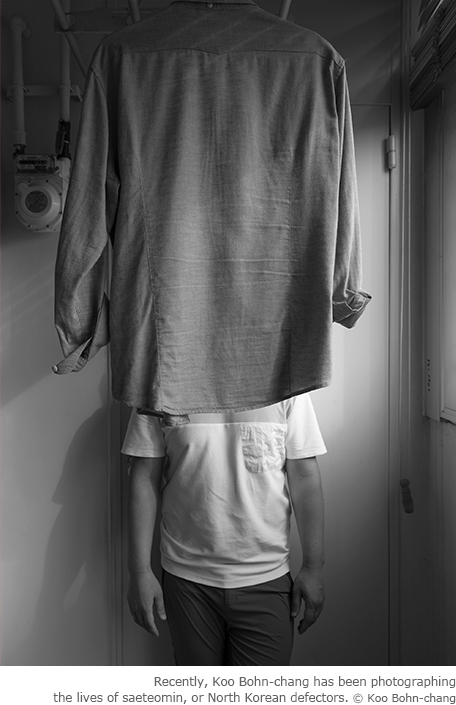
“A photographer finds special meaning in subjects that only they can find. My sensibilities and ego are reflected in the photographs that I take. Finding their own subject, and a new visual language to express it, should be the photographer’s mission to the very end.”
Koo Bohn-chang is a photo artist who never stops experimenting at the boundary between the analogue and the digital. How will his next project captivate our eyes and souls? It’s exciting to look forward to the new visual language that he continues to develop.
Other Articles



Dreaming of Delightful Zone


Take You to the DMZ





Application of subscription
Sign upReaders’ Comments
GoThe event winners
Go


 June 2018
June 2018

